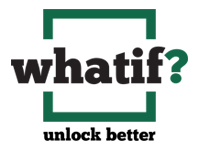
Performance, growth, and learning cultures and questions to ponder
The practice of learning will need to become a core capability organizations must adopt to address talent acquisition, development, and retention.
ecent discussions with executives have focused on the impact the pandemic has had and continues to have on organization culture. There is concern a shift to flexible work environments is dissipating efforts made strengthening culture with many questions on how it will influence hard-won progress made over the next few years. As one leader put it, “We just don’t know what the result will be, and we quickly need to learn what to do”. The point on learning is important and makes me wonder if we are sufficiently imbedding learning into culture.
People are products of performance cultures. It’s how we’ve been educated, hired, promoted, and evaluated in our careers, so it’s no wonder we endorse performance-based practices. Performance cultures center on production with measures based on inputs and outputs, i.e., resource efficiency, widgets produced, widgets sold. More is generally better, and it manifests into “up or out” cultures in many instances. Most organizations use performance as a basis for pay and promotion. But what if this system is biased toward individuals that tend to thrive in performance cultures? Are we missing out on unrecognized talent?
The growing focus on stakeholder capitalism and Diversity, Equity, and Inclusion (DEI) has spawned an emphasis on creating growth cultures. More than just a top or bottom-line focus, growth is a multi-faceted agenda aimed at creating value for customers, employees, shareholders, and communities in an environmentally friendly way. Growth culture performance indicators are more outcome oriented around customer retention and NPS, employee retention and DEI, TSR and brand equity. Leaders also recognize the need to instill a growth mindset in culture to grow vertically and horizontally to better meet stakeholder needs and create sustainable growth. What if growth becomes a thinly veiled cover for accelerating performance? How might that affect stakeholder sentiment?
More and more leaders also recognize the need to imbed learning into culture. More effective use of data and analytics is driving insightful risk analysis, informed strategic choices, and better decision making. At the same time, learning as a feedback mechanism in every aspect of business operations will be important to support growth agendas. Learning as a practice will increasingly need to be democratized with bottoms up or grassroots engagement on issues, insights, and opportunities for improvement. Particularly as businesses develop agile practices and evolve to digital business models. At the same time, the practice of learning will need to become a core capability organizations must adopt to address talent acquisition, development, and retention. Think of all the new roles that have developed in the past five years and the amount of in-house learning required. Consider the new roles being developed and people in flexible or hybrid work environments, and the need for learning grows significantly. If culture is about the beliefs and values that drive behavior, what new beliefs will be needed to foster true learning cultures? In some cultures, bad news does not travel upward. What’s the impact this has on stakeholders and growth, in addition to inhibiting learning? What if we rewarded people for holding up a yield or stop sign vs. punishing them?
As we take time to break for the holidays, it’s a good time to reflect and ponder a few questions on this topic:
· Does culture evolve through different stages of maturity from performance to growth, to learning? Or is it a mosaic that has elements of all three?
· Does a performance mindset prevent accessing the full array of talent and diverse perspectives?
· What do we really mean when we talk about a growth culture? What’s our mindset now and what needs to change?
· What if we embraced learning as the foundation or bedrock of culture? How might it inform growth and performance, and the development and retention of diverse talent?
I use this time of year to reread Frankl’s, Man’s Search for Meaning. It serves as my annual reminder of the importance of finding meaning in adversity. As the world and our operating environment continue to evolve, one constant is people’s desire for meaningful work and meaningful relationships, aligned with a sense of purpose. The more we embrace learning in its full sense, the more meaning we can create. I believe that’s a noble aspiration for 2022.


Leave a Reply